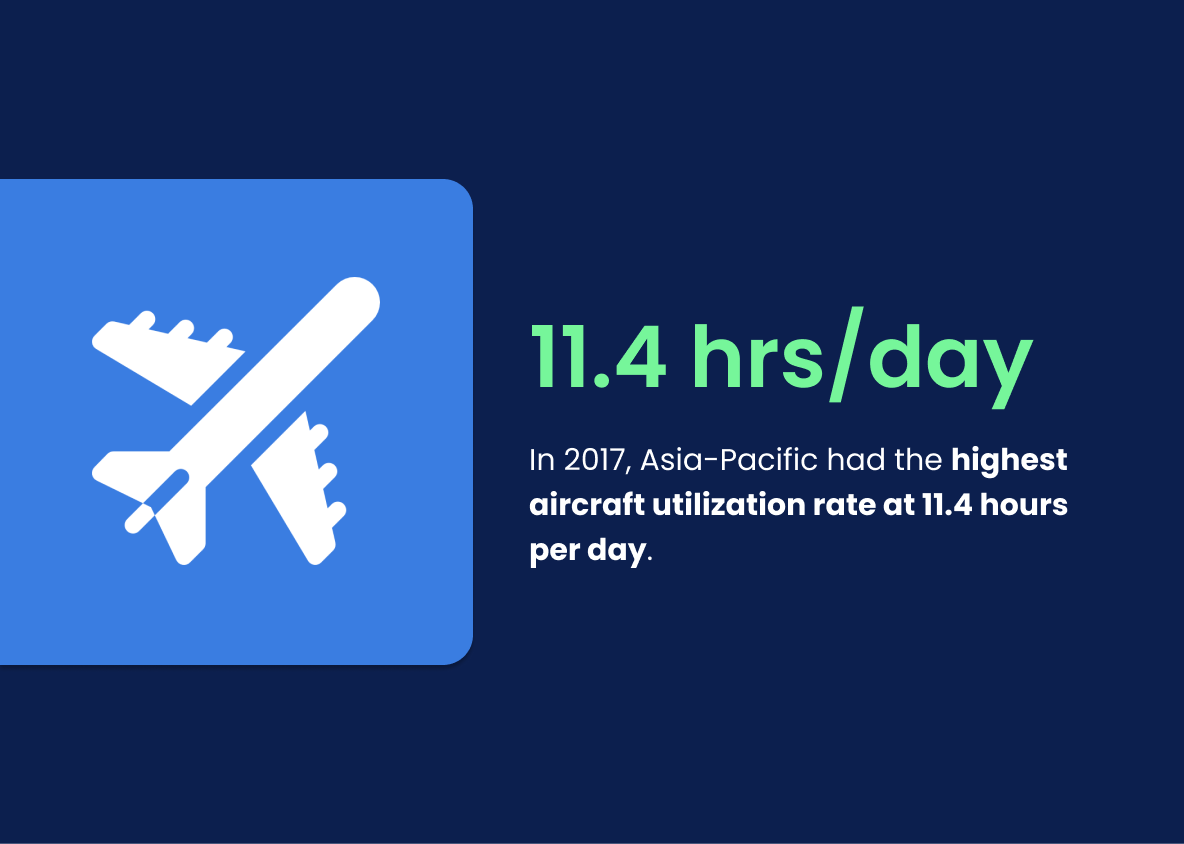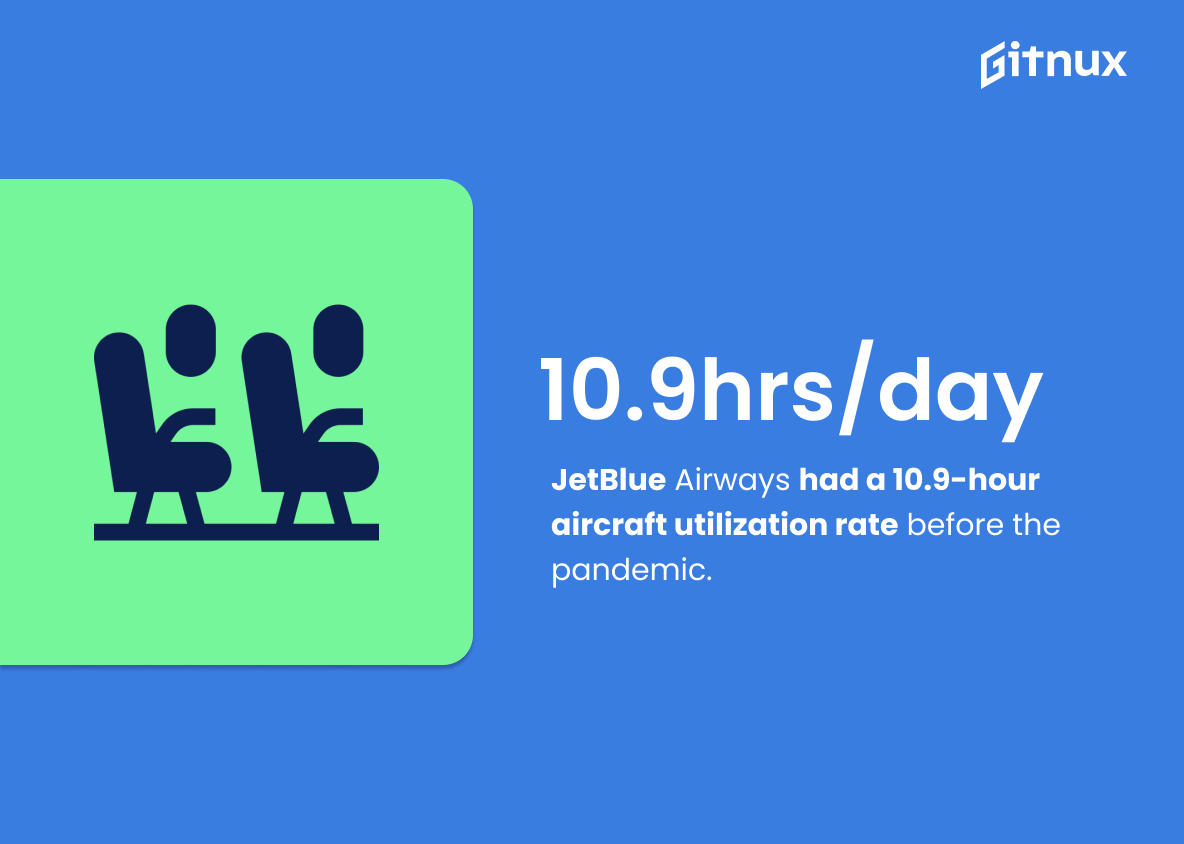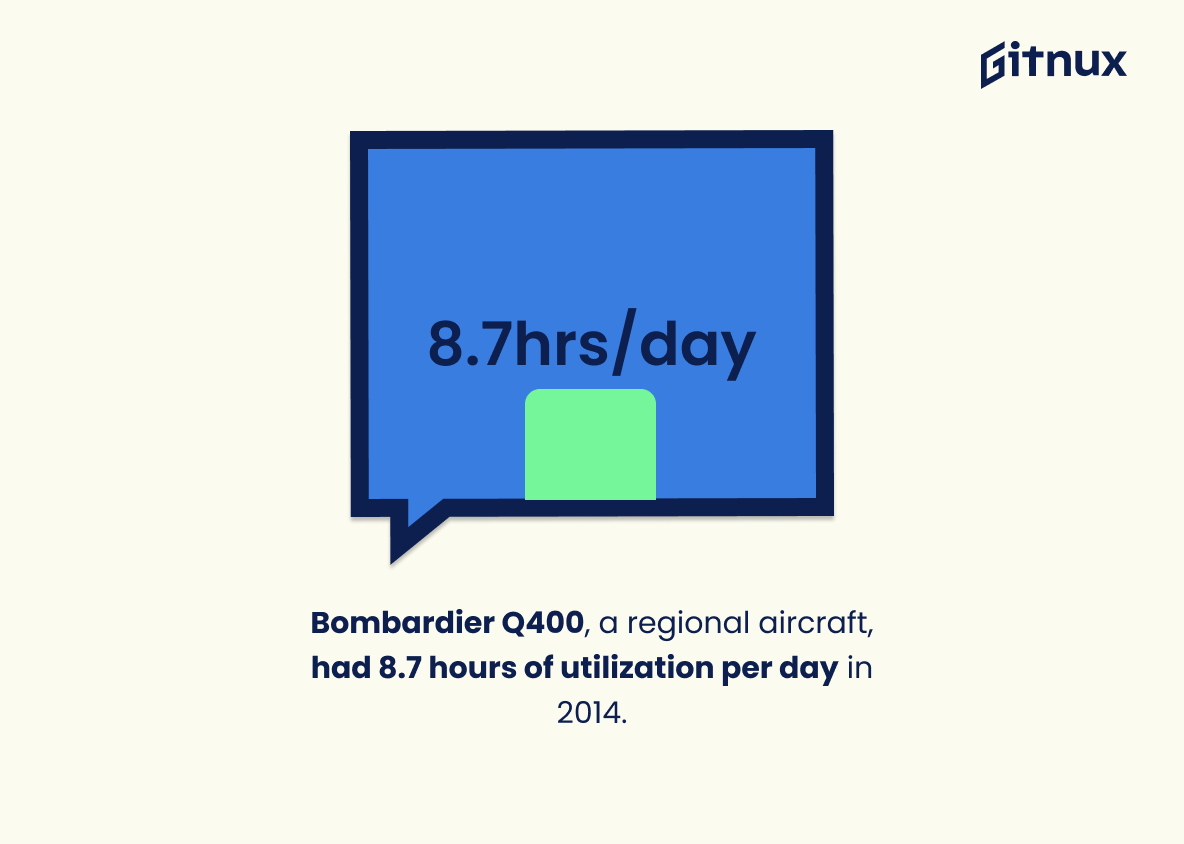Aircraft utilization is an important metric for airlines to measure the efficiency of their operations. It refers to the amount of time that aircraft are in use, typically measured in hours per day. This blog post will explore various statistics related to aircraft utilization from around the world and across different types of carriers. We’ll look at data from 2019 through 2020, including pre-pandemic figures as well as those affected by COVID-19 restrictions. Additionally, we’ll compare usage rates between regions and individual airlines such as Ryanair, EasyJet, JetBlue Airways and AirAsia Berhad among others. Finally, we’ll examine how certain factors like type of aircraft can influence overall utilization rate for a given airline or region.
This statistic is a crucial indicator of the efficiency of aircraft utilization in the aviation industry. It provides insight into how much time aircrafts are being used on a daily basis, which can be used to measure the effectiveness of airline operations. By understanding the average aircraft utilization, airlines can make informed decisions on how to optimize their operations and maximize their profits. Additionally, this statistic can be used to compare the performance of different airlines and identify areas for improvement.
U.S. airlines utilized their aircraft for an average of 12.4 hours per day in Q4 of 2020.
The statistic of U.S. airlines utilizing their aircraft for an average of 12.4 hours per day in Q4 of 2020 is a testament to the resilience of the aviation industry in the face of the pandemic. Despite the unprecedented challenges posed by the virus, the industry has managed to maintain a high level of aircraft utilization, demonstrating its ability to adapt and remain competitive. This statistic is a valuable insight into the current state of the aviation industry and provides a valuable benchmark for future performance.
Aircraft Utilization Statistics Overview
The Asia-Pacific region had the highest aircraft utilization rate in 2017, at 11.4 hours per day.
This statistic is a testament to the Asia-Pacific region’s commitment to efficient aircraft utilization. It demonstrates that the region is leading the way in maximizing the use of its aircraft, allowing for greater productivity and cost savings. This is an important point to consider when discussing aircraft utilization statistics, as it highlights the potential for other regions to follow suit and reap the same benefits.
The low-cost airlines commonly have higher aircraft utilization rates, averaging around 13.5 hours per day.
This statistic is a testament to the efficiency of low-cost airlines, demonstrating that they are able to maximize their aircraft utilization rates to an impressive 13.5 hours per day. This impressive figure highlights the effectiveness of their operations and the potential for other airlines to learn from their success.
EasyJet’s aircraft utilization rate in 2018 was nearly 11 hours per day.
The fact that EasyJet’s aircraft utilization rate in 2018 was nearly 11 hours per day is a testament to the airline’s commitment to efficiency and cost-effectiveness. This impressive statistic demonstrates that EasyJet is able to maximize the use of its aircraft, allowing them to provide more flights and better service to their customers. This is an important factor to consider when looking at aircraft utilization statistics, as it shows that the airline is able to make the most of its resources.
In 2020, commercial aircraft utilization in North America dropped to 5.5 hours per day due to the COVID-19 pandemic.
This statistic is a stark reminder of the impact the COVID-19 pandemic has had on the aviation industry. It highlights the dramatic decrease in commercial aircraft utilization in North America, which has had a significant effect on the industry. This statistic is an important part of understanding the current state of the aviation industry and the challenges it faces in the future.
Global aircraft utilization fell by 42% from January to April 2020 due to the COVID-19 pandemic.
The staggering statistic of a 42% decrease in global aircraft utilization from January to April 2020 serves as a stark reminder of the devastating impact the COVID-19 pandemic has had on the aviation industry. This statistic paints a vivid picture of the immense disruption the pandemic has caused, and serves as a powerful reminder of the importance of aircraft utilization statistics in understanding the current state of the aviation industry.
JetBlue Airways had an aircraft utilization rate of 10.9 hours per day before the COVID-19 pandemic.
This statistic is a powerful indicator of the impact of the COVID-19 pandemic on the aviation industry. It shows that prior to the pandemic, JetBlue Airways had an impressive aircraft utilization rate of 10.9 hours per day. This demonstrates the airline’s efficiency and effectiveness in managing its fleet, and serves as a benchmark for other airlines to strive for. The drastic decrease in aircraft utilization rate since the pandemic began is a stark reminder of the devastating effects of the virus on the aviation industry.
The Airbus A320 family of aircraft generally experiences a higher utilization rate compared to the Boeing 737, with an average of 13.2 hours per day.
This statistic is a testament to the Airbus A320 family of aircraft’s efficiency and reliability, demonstrating that it can be used for more hours per day than the Boeing 737. This speaks to the aircraft’s ability to meet the demands of the aviation industry, making it a valuable asset for airlines. As such, this statistic is an important factor to consider when discussing aircraft utilization statistics.
AirAsia Berhad, a Malaysian low-cost carrier, achieved an average aircraft utilization of 13.1 hours per day in 2019.
The impressive aircraft utilization rate of 13.1 hours per day achieved by AirAsia Berhad in 2019 is a testament to the airline’s commitment to efficiency and cost-effectiveness. This statistic is a shining example of how airlines can maximize their resources and maximize their profits. It is a great example of how aircraft utilization can be used to increase efficiency and reduce costs, making it an important statistic to consider when discussing aircraft utilization.
In 2016, commercial aircraft utilization for Air France-KLM group was 12.2 hours per day.
The fact that Air France-KLM group had an aircraft utilization of 12.2 hours per day in 2016 is a testament to the efficiency of their operations. This impressive statistic shows that the airline is able to maximize the use of their aircraft, allowing them to provide more flights and services to their customers. This statistic is a great example of how aircraft utilization can be used to improve the efficiency of an airline’s operations.
Emirates Airline, in 2017, had an aircraft utilization rate of 12.9 hours per day for Boeing 777 aircraft.
The statistic of Emirates Airline’s aircraft utilization rate of 12.9 hours per day for Boeing 777 aircraft is a testament to the airline’s commitment to efficiency and productivity. This impressive rate of utilization demonstrates the airline’s ability to maximize the use of its aircraft, allowing them to provide more flights and services to their customers. This statistic is an important indicator of the airline’s success in the industry and serves as a benchmark for other airlines to strive for.
The Airbus A380 had an average daily utilization of 14.3 hours in 2017.
This statistic is a testament to the efficiency of the Airbus A380, demonstrating that the aircraft is capable of achieving a high level of utilization in a single day. This is an important factor to consider when evaluating aircraft utilization statistics, as it shows that the A380 is a reliable and efficient aircraft that can be used for a variety of purposes.
The average aircraft utilization for Bombardier Q400, a regional aircraft, was 8.7 hours per day in 2014.
This statistic is a testament to the efficiency of the Bombardier Q400 regional aircraft, demonstrating that it can be used for an average of 8.7 hours per day. This impressive utilization rate is a key factor in the success of the aircraft, as it allows airlines to maximize their profits and minimize their costs. As such, this statistic is an important piece of information for anyone interested in learning more about aircraft utilization statistics.
In 2019, Qantas Airways reported an average aircraft utilization rate of 11.3 hours per day.
The fact that Qantas Airways reported an average aircraft utilization rate of 11.3 hours per day in 2019 is a testament to the airline’s commitment to maximizing the efficiency of its fleet. This statistic is indicative of the airline’s dedication to ensuring that its aircraft are being used to their fullest potential, and it serves as a benchmark for other airlines to strive for.
Conclusion
The data shows that aircraft utilization rates vary significantly between airlines, regions and types of aircraft. The average global rate in 2019 was 10.7 hours per day, while U.S. airlines had an average of 12.4 hours per day in Q4 2020 due to the COVID-19 pandemic causing a drop from January to April 2020 by 42%. Low-cost carriers tend to have higher utilization rates than traditional ones, with Ryanair having the highest European airline rate at 12.8 hours per day in 2014 and EasyJet nearly 11 hours per day in 2018; AirAsia Berhad achieved 13.1 hour daily usage for its fleet in 2019 as well as Emirates Airline’s Boeing 777s reaching 12.9 hourly useage during 2017 . Airbus A320 family planes generally experience higher utilisation compared to Boeing 737s (13:2 vs 9:9) whilst Bombardier Q400 regional jets reported 8:7 hrs/day back on 2014 – Hawaiian Airlines’ figure being 9:9 hrs/day last year – but even so it is clear that commercial aviation has been greatly affected by the coronavirus crisis worldwide since then.
References
0. – https://www.argusmedia.com
1. – https://www.centreforaviation.com
2. – https://www..deloitte.com
3. – https://www.aviationpros.com
4. – https://www.bombardier.com
5. – https://www.statista.com
6. – https://www.sec.gov
7. – https://www.airbus.com
8. – https://www.icao.int
9. – https://www.emirates.com
10. – https://www.qantas.com
11. – https://www.iata.org
12. – https://www.airfranceklm.com













